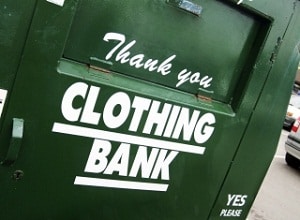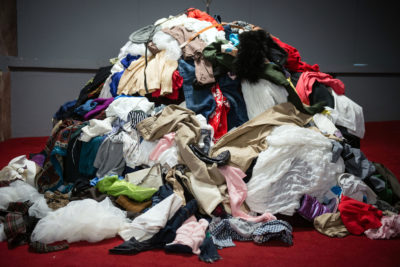Theft of used clothing left for collection at the kerbside and in collection banks is on the increase and is helping to fund more serious criminal activity, such as drug trafficking and people smuggling.
Thats the message from the Textile Recycling Association (TRA), which today (June 24) claimed that, by making the industry less commercial viable due to lost revenues from theft, the trend was disrupting plans outlined in last weeks Waste Review to divert more textiles from landfill.

The TRA highlighted the impact of theft on both charities and the commercial companies which pay for their used clothing, claiming theft has seriously eroded the 200 million-plus it estimated clothing collectors had paid charities for material over the past 12 months.
And, it raised particular concerns over where money raised from the sale of stolen clothing was ending up, which it said was being used benefit the pockets of organised crime gangs.
Intelligence gathered so far suggests that some money is being used for drug trafficking, people smuggling and other unsavoury activities, the TRA claimed in a statement.
Outlining exactly how hard the problem is to tackle, the TRA said: Time and again CCTV footage has shown how these gangs operate, particularly in relation to clothing banks sophistication is not at its highest level.
It added: By forcing their way into containers they cause considerable criminal damage, deny the benefiting charity of valuable income and steal the income that is much needed for the businesses that operate the majority of clothing banks on behalf of charity in the UK.
It is also exceptionally dangerous to break into banks and several people have been killed by trying to do this in recent years.
The scale of the problem – which is driven by the relatively high price of textiles – has been regularly highlighted in anecdotal evidence given by textile recyclers to letsrecycle.com. This has led to increasing enthusiasm for a drop in prices in the hope that it will dissuade bogus collectors and thieves from becoming involved.
Impact
The impact of theft on individual textile recycling businesses was highlighted by Ray Clark, operations manager for London-based LM Barry. He said: We just cant keep up with the thefts.
We had to make people redundant last year and this is completely down to the losses we are making from the break-ins. Weve also spent more than 250,000 modifying bins just to stop people breaking into them.
Gerald Cemmell, president of the TRA, added: Payments to a clothing collectors respective charity partners are affected greatly when these incidences occur.
Action
The TRA did, however, also stress the action being taken to address the issue. This includes its work with an intelligence gathering team set up by the National Fraud Intelligence Bureau (NFIB) to investigate the involvement of criminal gangs.
The Textile Recycling Association and other agencies are working with NFIB to collate and map intelligence and we hope to see tangible results soon, it said.
Related links
The TRA was also involved in the development of a revised House-to-House Collections Code of Fundraising Practice, which was published in March 2011 (see letsrecycle.com story). The code aims to address the issue of bogus collectors by raising collection standards.











Subscribe for free